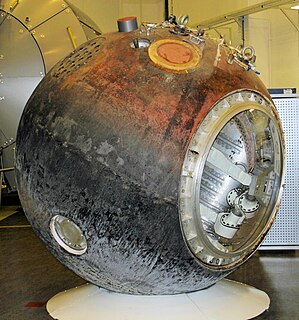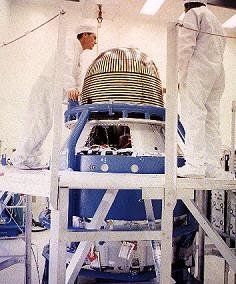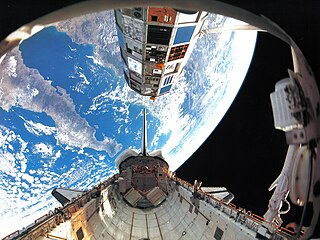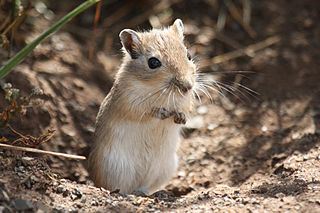 W
WNon-human animals in space originally served to test the survivability of spaceflight, before human spaceflights were attempted. Later, other non-human animals were flown to investigate various biological processes and the effects microgravity and space flight might have on them. Bioastronautics is an area of bioengineering research which spans the study and support of life in space. To date, seven national space programs have flown animals into space: the Soviet Union, United States, France, Argentina, China, Japan and Iran.
 W
WThe growth of plants in outer space has elicited much scientific interest. In the late 20th and early 21st century, plants were often taken into space in low Earth orbit to be grown in a weightless but pressurized controlled environment, sometimes called space gardens. In the context of human spaceflight, they can be consumed as food and/or provide a refreshing atmosphere. Plants can metabolize carbon dioxide in the air to produce valuable oxygen, and can help control cabin humidity. Growing plants in space may provide a psychological benefit to human spaceflight crews. Usually the plants were part of studies or technical development to further develop space gardens or conduct science experiments. To date plants taken into space have had mostly scientific interest, with only limited contributions to the functionality of the spacecraft, however the Apollo Moon tree project was more or less forestry inspired mission and the trees part of a country's bicentennial celebration.
 W
WArabidopsis thaliana, the thale cress, mouse-ear cress or arabidopsis, is a small flowering plant native to Eurasia and Africa. A. thaliana is considered a weed; it is found by roadsides and in disturbed land.
 W
WBIOPAN is a multi-user research program by the European Space Agency (ESA) designed to investigate the effect of the space environment on biological material. The experiments in BIOPAN are exposed to solar and cosmic radiation, the space vacuum and weightlessness, or a selection thereof. Optionally, the experiment temperature can be stabilized. BIOPAN hosts astrobiology, radiobiology and materials science experiments.
 W
WNASA launched three satellites named Biosatellite 1, 2 and 3 between 1966 and 1969.
 W
WBioSentinel is a planned low-cost CubeSat spacecraft on a space biology mission that will use budding yeast to detect, measure, and compare the impact of deep space radiation on DNA repair over long time beyond low-Earth orbit.
 W
WBrassica rapa is a plant species growing in various widely cultivated forms including the turnip ; napa cabbage, bomdong, bok choy, and rapini; and Brassica rapa subsp. oleifera, an oilseed which has many common names, including turnip rape, field mustard, bird rape, and keblock.
 W
WMizuna , kyona, Japanese mustard greens, or spider mustard, is a cultivar of Brassica rapa var. niposinica.
 W
WArtemia is a genus of aquatic crustaceans also known as brine shrimp. Artemia, the only genus in the family Artemiidae, has changed little externally since the Triassic period. The first historical record of the existence of Artemia dates back to the first half of the 10th century AD from Urmia Lake, Iran, with an example called by an Iranian geographer an "aquatic dog", although the first unambiguous record is the report and drawings made by Schlösser in 1757 of animals from Lymington, England. Artemia populations are found worldwide in inland saltwater lakes, but not in oceans. Artemia are able to avoid cohabiting with most types of predators, such as fish, by their ability to live in waters of very high salinity.
 W
WChang'e 4 is a robotic spacecraft mission, part of the second phase of the Chinese Lunar Exploration Program. China achieved humanity's first soft landing on the far side of the Moon, on 3 January 2019.
 W
WChroococcidiopsis is a photosynthetic, coccoidal bacterium and while a diversity of species and cultures exist within the genus, with a diversity of phenotypes, some members of the order Chroococidiopsidales are known for their ability to survive harsh environmental conditions, including both high and low temperatures, ionizing radiation, and high salinity. Organisms capable of living in such harsh conditions are referred to as extremophiles.
 W
WCinnamon basil is a type of basil. The term "cinnamon basil" can refer to a number of different varieties of basil, including as a synonym for Thai basil, as a particular cultivar of Thai basil, and as a separate cultivar in its own right. This article discusses the latter type.
 W
WCommon squirrel monkey is the traditional common name for several small squirrel monkey species native to the tropical areas of South America. The term common squirrel monkey had been used as the common name for Saimiri sciureus before genetic research by Jessica Lynch Alfaro and others indicated S. scuireus covered at least 3 and possibly 4 species: the Guianan squirrel monkey, Humboldt's squirrel monkey and Collins' squirrel monkey. The Ecuadorian squirrel monkey, generally regarded as a subspecies of Humboldt's squirrel monkey, had also been sometimes proposed as a separate species that had originally been included within the term "common squirrel monkey."
 W
WThe crab-eating macaque, also known as the long-tailed macaque, is a cercopithecine primate native to Southeast Asia. It is referred to as the cynomolgus monkey in laboratories. A species of macaque, the crab-eating macaque has a long history alongside humans; it has been alternately seen as an agricultural pest, sacred animal in some temples, and more recently, the subject of medical experiments.
 W
WDazu Lotus Manor (大足荷花山庄) is a lotus farm attraction in Dazu, Chongqing Municipality, China.
 W
WExobiology Radiation Assembly (ERA) was an experiment that investigated the biological effects of space radiation. An astrobiology mission developed by the European Space Agency (ESA), it took place aboard the European Retrievable Carrier (EURECA), an unmanned 4.5 tonne satellite with a payload of 15 experiments.
 W
WEXPOSE is a multi-user facility mounted outside the International Space Station dedicated to astrobiology. EXPOSE was developed by the European Space Agency (ESA) for long-term spaceflights and was designed to allow exposure of chemical and biological samples to outer space while recording data during exposure.
 W
WKalanchoe, or kal-un-KOH-ee, or kal-un-kee, also written Kalanchöe or Kalanchoë, is a genus of about 125 species of tropical, succulent flowering plants in the family Crassulaceae, mainly native to Madagascar and tropical Africa. Kalanchoe was one of the first plants to be sent into space, sent on a resupply to the Soviet Salyut 1 space station in 1971.
 W
WNASA's Long Duration Exposure Facility, or LDEF, was a school bus-sized cylindrical facility designed to provide long-term experimental data on the outer space environment and its effects on space systems, materials, operations and selected spores' survival. It was placed in low Earth orbit by Space Shuttle Challenger in April 1984. The original plan called for the LDEF to be retrieved in March 1985, but after a series of delays it was eventually returned to Earth by Columbia in January 1990.
 W
WThe rhesus macaque is a species of Old World monkey. It is listed as least concern in the IUCN Red List of Threatened Species in view of its wide distribution, presumed large population, and its tolerance of a broad range of habitats. It is native to South, Central, and Southeast Asia and has the widest geographic range of all non-human primates, occupying a great diversity of altitudes and a great variety of habitats, from grasslands to arid and forested areas, but also close to human settlements.
 W
WMealworms are the larval form of the mealworm beetle, Tenebrio molitor, a species of darkling beetle. Like all holometabolic insects, they go through four life stages: egg, larva, pupa, and adult. Larvae typically measure about 2.5 cm or more, whereas adults are generally between 1.25 and 1.8 cm in length.
 W
WMilnesium tardigradum is a cosmopolitan species of tardigrade that can be found in a diverse range of environments. It has also been found in the sea around Antarctica. M. tardigradum was described by Louis Michel François Doyère in 1840. It contains unidentified osmolytes that could potentially provide important information in the process of cryptobiosis.
 W
WThe Mongolian gerbil or Mongolian jird is a small rodent belonging to the subfamily Gerbillinae. Body size is typically 110–135mm, with a 95–120mm tail, and body weight 60–130g, with adult males larger than females. The animal is used in science and kept as a small house pet. Their use in science dates back to the latter half of the 19th century, but they only started to be kept as pets in the English-speaking world after 1954, when they were brought to the United States. However, their use in scientific research has fallen out of favor.
 W
WMoon trees are trees grown from 500 seeds taken into orbit around the Moon by Stuart Roosa, the Command Module Pilot on the Apollo 14 mission in 1971. Roosa, who had been a smoke jumper, was contacted by Ed Cliff, the Chief of the Forest Service at the time, with the idea of taking the seeds along. Seeds for the experiment were chosen from five different species of trees: loblolly pine, sycamore, sweetgum, redwood, and Douglas fir.
 W
WThe Mozambique tilapia is an oreochromine cichlid fish native to southeastern Africa. Dull colored, the Mozambique tilapia often lives up to a decade in its native habitats. It is a popular fish for aquaculture. Due to human introductions, it is now found in many tropical and subtropical habitats around the globe, where it can become an invasive species because of its robust nature. These same features make it a good species for aquaculture because it readily adapts to new situations. It is known as black tilapia in Colombia and as blue kurper in South Africa.
 W
WPiophila is a genus of small two-winged flies which includes the species known as the cheese fly. As a whole, the genus is often called wine flies; they prefer fermented foodstuffs to deposit their eggs. Piophila vulgaris visits Arum maculatum flowers in England. The genus is found in the Palearctic.
 W
WNASA's Rodent Research Hardware System provides a research platform aboard the International Space Station for long-duration experiments on rodents in space. Such experiments will examine how microgravity affects the rodents, providing information relevant to human spaceflight, discoveries in basic biology, and knowledge that can help treat human disease on Earth.
 W
WThe Tanpopo mission is an orbital astrobiology experiment investigating the potential interplanetary transfer of life, organic compounds, and possible terrestrial particles in the low Earth orbit. The purpose is to assess the panspermia hypothesis and the possibility of natural interplanetary transport of microbial life as well as prebiotic organic compounds.
 W
WTardigrades, known colloquially as water bears or moss piglets, are a phylum of eight-legged segmented micro-animals. They were first described by the German zoologist Johann August Ephraim Goeze in 1773, who called them little water bears. In 1777, the Italian biologist Lazzaro Spallanzani named them Tardigrada, which means "slow steppers".
 W
WThe Russian tortoise, also commonly known as the Afghan tortoise, the Central Asian tortoise, Horsfield's tortoise, four-clawed tortoise, and the (Russian) steppe tortoise, is a threatened species of tortoise in the family Testudinidae. The species is endemic to Central Asia. Human activities in its native habitat contribute to its threatened status.
 W
WThe Vegetable Production System (Veggie) is a plant growth system developed and used by NASA in outer space environments. The purpose of Veggie is to provide a self-sufficient and sustainable food source for astronauts as well as a means of recreation and relaxation through therapeutic gardening. Veggie was designed in conjunction with ORBITEC and is currently being used aboard the International Space Station, with another Veggie module planned to be delivered to the ISS in 2017.